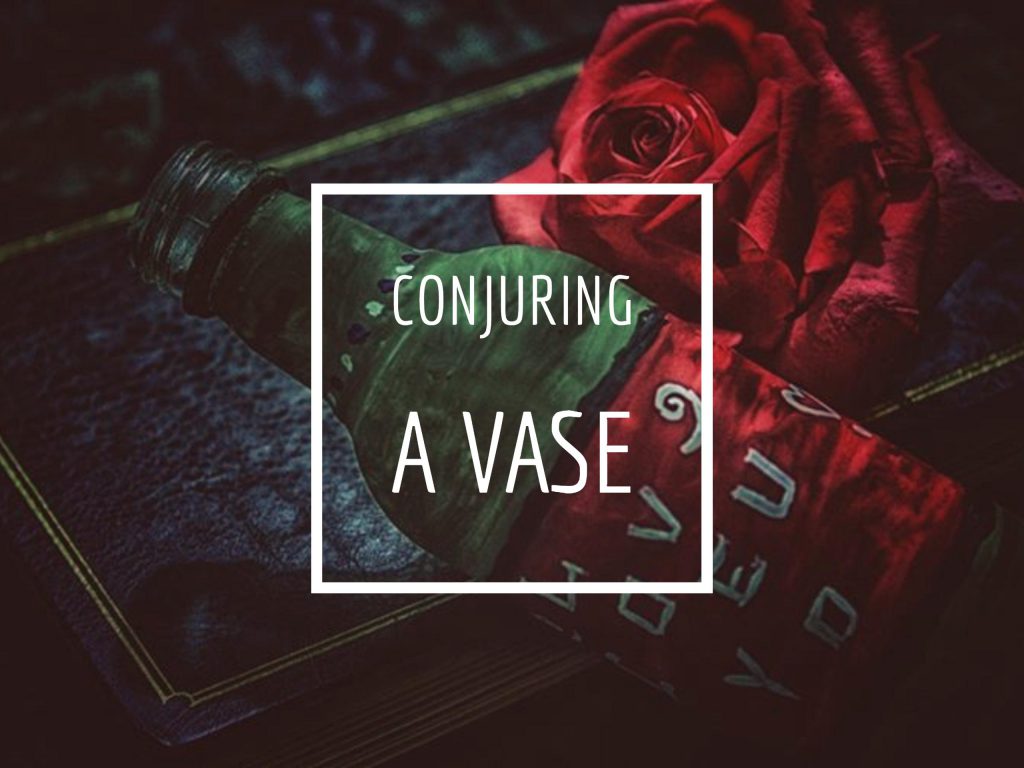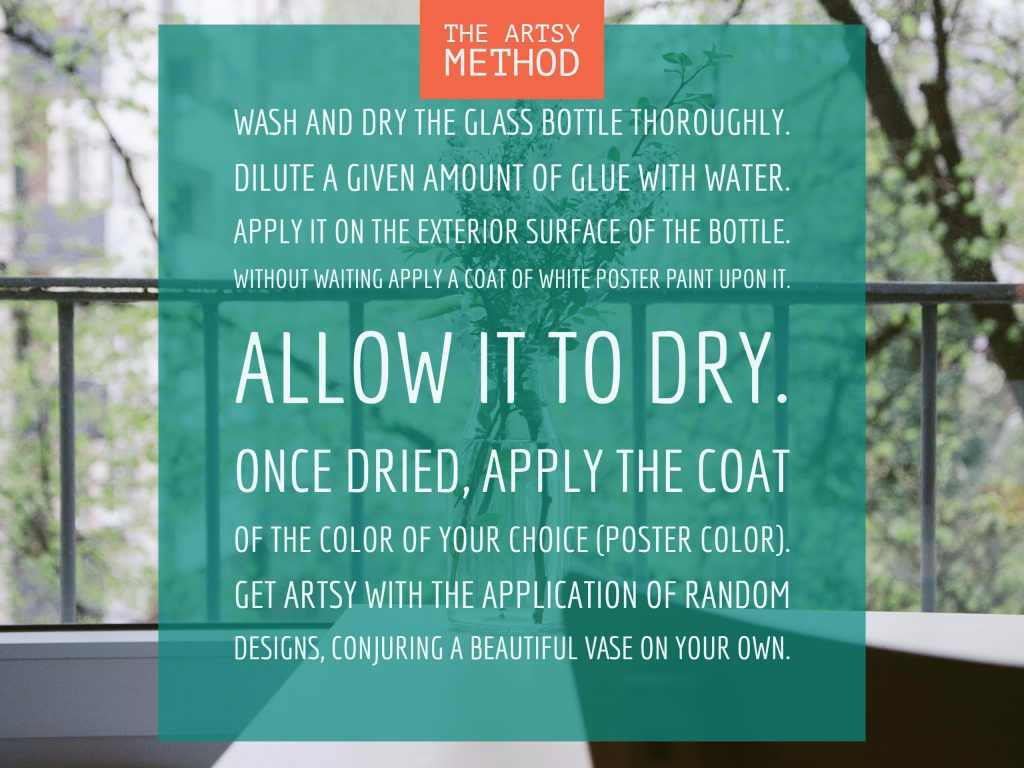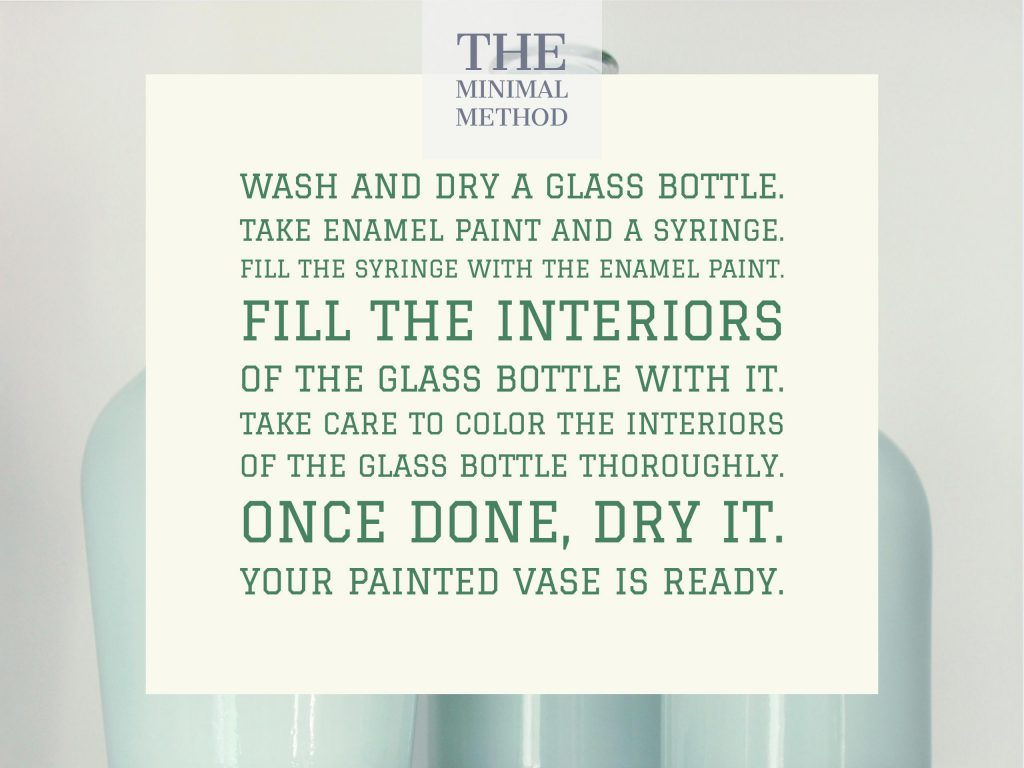There was a time when I used to cast a glance across my room and a flood of bottles used to play host to my attention. Yes, when it came to empty bottles, they were innumerable and when I say bottles, I definitely don’t mean everlasting bottles that account for the purpose of storage of water et al, but rather the bottles that are meant to be disposed of after their contents have been thoroughly utilized by us. They can either be plastic bottles, that once harbored the fluidity of water or cold drink or glass bottles that once boasted of milk, liquor et al. And my room harbored them all. It was then, my conscience came into play and I started to rhyme with the essence of cleanliness, picking up and placing all the useless bottles that lay littered in my room in a big black ghastly polybag, with the intent to dispose of them. One of those moments of pure bliss, when I finally cleaned my room. If anyone who knows me well enough, witness me partaking in such actions, then he/she cannot resist thinking quite highly of me, I bet. But not before getting struck by a jolt of surprise. But often when I indulged in this painstaking task, I often came across bottles, that were exceptionally beautiful. Nothing royally exceptional about them, so to say, and though they were nothing but empty vessels composed of glass, yet there was something slender in their shape, something appealing in their very design, that evoked nothing but pity in my heart when it came to treating them as useless entities. Hence, with my heart triumphing over my conscience, I used to keep the most beautiful empty bottles, along with me, believing that their venture as a glass vessel was not yet over, determined that they were meant to be something that bore a higher importance in the future. And I was supposed to steer them along that path. Open the windows of your mind and in flies, an assortment of ideas, pick the best amongst them, bringing it in vogue, transforming an entity, into another form, that’s more beautiful than the original – utilization of the worthless, a form of recycling – the concept of reincarnating an entity.
When words are concerned, in quite a many, I have expressed that I have been an admirer of the floral boons of nature. When it comes to beauty, form, fragrance, color and gradients, nothing can beat the essence and the impact that is imparted by a flower. When a flower is no longer blossoming in nature’s paradise, it finds harbor, under the roof of our place, placed in a beautiful vase, that compliments it all the more, adding to its charm. In my life, I have come across some very elegant vases – I hate to admit it, but the truth is that some vases possessed, even more, charisma than the flowers that they held. I realize that the beauty that’s imparted by a flower cannot be dominated, but sometimes the creations of human beings tend to make an exception. When I was a kid, I had an assortment of beautiful vases that adorned my home, all crafted with subtle designs, molded out of porcelain. The synonymous part is, that vases, like flowers, are not only beautiful but are also delicate. Try acting careless with a porcelain vase and you, yourself, shall be making sure, that you will be feeling sorry afterward. But times have changed, and often the creative in me, comes to life, propelling my senses to conjure something based on my own, with my very own hands. Hence, after formulating a few ideas in my mind, after sparking my creativity at the sight of those beautiful glass bottles that lay in the dooming vacancy of an isolated corner, I made up my mind, to create beautiful vases out of their emptiness. And I surely did too, hence, I have knowledge to impart to you and you have something to ponder upon.
So, let’s gear up. Yes, before you decide to transform that empty glass bottle into a vase, you need to have in your possessions a few essential provisions. First of all is an empty glass bottle. Second is paints. Now, you have the freedom to choose the paint of your choice. You can either go with common poster paints (yes, it’s not actually impossible to paint a glass bottle with them) or you can simplify the task for yourself and go with the choice of enamel paints (that are actually very glass bottle friendly). You definitely need glue, if you’re going forth with the decision of bringing poster paints in use. You need brushes and you surely do need patience.
With all set and everything in place, we shall begin with the process of cleaning the glass bottle, for it’s not only the primal but the most important of all task. Clean it thoroughly with fresh water and soap, and bear in mind to remove every shred of paper (labels et al) from its body. Scrub it well and rinse it good, until it is as good as new.
Now keep the bottle to dry for some time. I shall recommend not to use the fan, for excessive air often tends to dry streaks of water upon the glass, often making their presence visible, and you shall be left with a bottle that reflects of residues sticking to its surface.
Now, after the bottle has dried up, you can embark on the task of painting it. As mentioned above, you are provided with two options. The first is, that you can paint the glass bottle with poster paint and the second is that you can go along with enamel paints. Both the processes have their own pros and cons, but they also tend to provide you with exceptionally beautiful results. Let us become acquainted with them, one by one.
The Artsy Method
When it comes to using poster paints to paint your glass bottle, you shall have to bring in the glue to use and its very usage comprises the first step. Dilute a given amount of glue with a proportion of water and loosen its form. When it attains a fluidity, grab a paint brush and apply the culmination of glue and water upon the exterior surface off the glass water. Apply it in such a manner, that this very surface of the glass is applied with the coagulated form in its entirety. If you are thinking that you now have to keep the bottle to dry yet again – Wrong! Hurry up, quick and fast and grab your brushes and colors. Without waiting, apply a singular coat of white colored paint, upon the now-sticky glass surface. Once done, allow it to rest for a while until the white paint dries up. This very white paint shall act as your base and with it drying to a crisp, you are privileged to start applying the color of your choice, upon it. Like every task and every endeavor, this process too has its pros and cons. The pros are that you are entitled to paint designs of your choice after you have applied the second coating of paint on the bottle. You are also privileged to paint your vase, over and over again, applying different colors paint and juggling with innumerable prospects of enticing designs. The cons are that you will never get a smooth finish, no matter how much you try to garnish the final product with market tricks – each and every brush stroke of yours shall be visible, but trust us, craft it beautifully and the final product that you conjure shall be nothing short of being praise-worthy.
The Minimal Method
The next technique is simpler than tying your shoelaces. Trust us. It requires the least of work and grants you with the finest of the end product. In this method, we shall be making use enamel paints. Mow those of you who are not very much familiar with the aspects of enamel paints bear the following in mind: It is a paint applied on hard surfaces in order to provide one with a final product that boasts of a glossy finish. Hence, to begin with, take the enamel paint of your choice and place it aside. For, to begin with, you have to wash the glass bottle first. Thoroughly, so to say. As we did in the previous process, remember? After washing and drying up the glass bottle, let’s dive a bit into the aspects of Holi. Remember ‘Pichkaari’s’, the sort of playful syringes, with which people used to shower each other with colors during the transpiration of festivities? Well, yes if you have them – good, if not, please borrow, because the very next step, desperately requires them. Remember, we abided by coloring the exteriors in the previous process, well – this time, we will do just the opposite and shall color the interiors this time. No glue, no poster paint, nothing. Just a syringe and enamel paint. We shall pull in hefty amount of enamel paint, filling it to the core, in the syringe and exhale every bit of it inside the glass bottle, running it across the walls of its interiors, making sure that every inch of it is graced by the color of our choice. We shall continue doing so until the bottle in its entirety is painted from the inside. Witness it. Witness the minimal vase you have just created and allow it to dry. The task is done. Pros? The final piece reflects the qualities of a modern masterpiece. And you didn’t have to work hard, did you? Cons? You can’t apply any designs and you can’t repaint it. Well, who cares, you have a beautiful vase anyway and it’s you who has created it. Kudos, cheers to you!
Personally, I am a patron of ‘The Artsy Method’, and though ‘The Minimalist Method’ also appeals to me, yet I believe that the former method provides me with a form of activity that liberates my essence of creativity and allowing me with a sense of full-fledged freedom to create something by having a full command on it. Whilst, the latter method, though restrains me from directing my creativity in entirety, still provides me with beautiful vases, that are nothing short of being a magnet to one’s vision. I hope, you are already lunging to discover empty vase bottle to make apt use of them, hence, I bid you adieu. Happy creating!









